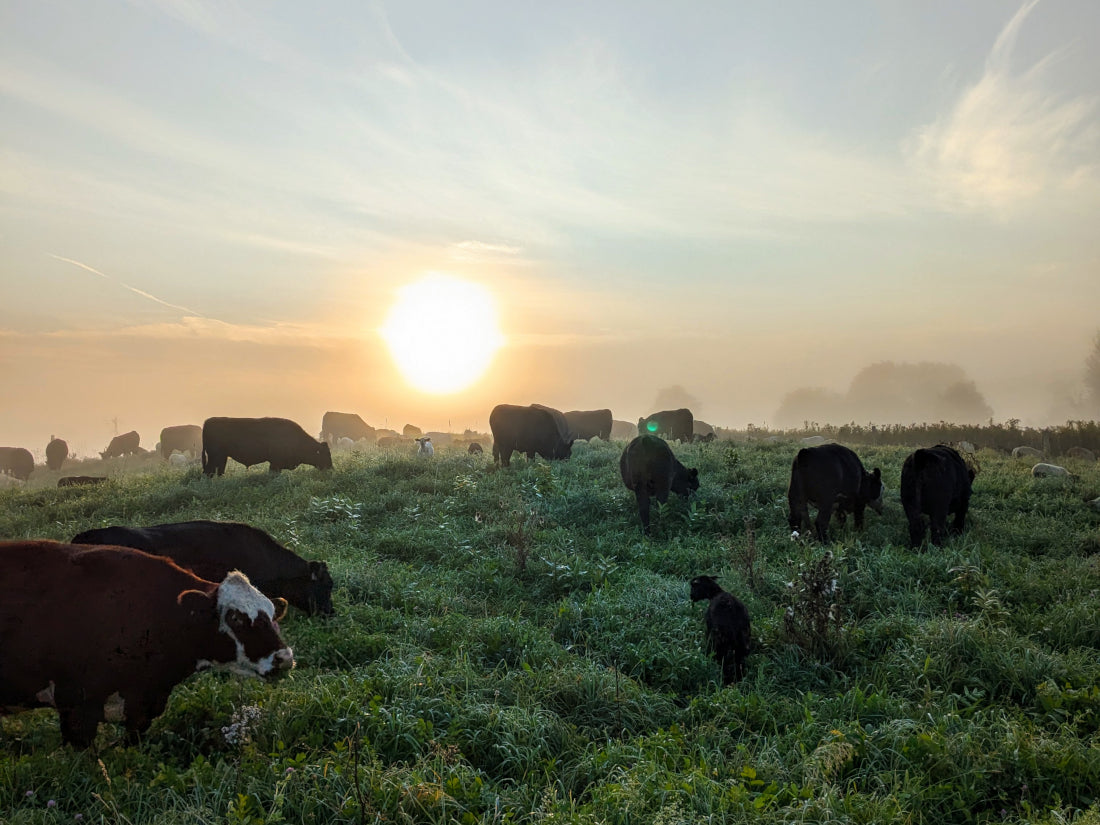People have written endlessly about beauty standards and the malign influence of advertising, Instagram, and fashion magazines on our collective idea of what a healthy, attractive human looks like. But where do we get our ideas about what a healthy, attractive farm looks like?
If you search online for photos of “beautiful farms” you’ll see a good variety, from row crops to veggies to pasture. Some even have cows or sheep or horses. Compared to their prominence in the agricultural economy, pictures of corn and soy are underrepresented, though not absent, and they often include an idyllic farmhouse.
While I’m heartened by the number of photos of farms consisting of pasture and hay ground (I’m biased, after all, since my farm is covered in pasture and forest) I am also struck by their literal monotony. The fields of these farms look more like a lawns or golf course fairways than something livestock has been living on. They mostly look like a single species of grass, carefully mowed into a uniform covering.

I was reflecting on all this as I moved the cows into some fresh grass this morning. Of course, even calling it grass is a misnomer, because the pastures on my farm consist of dozens of species of plants. This time of year, with fall just around the corner, they continue to grow vigorously, storing up energy for next year. It’s not the mad rush of spring, when everything is blossoming with flowerheads and seed stalks, but there’s a remarkable density and variety of foliage.
In addition to grass and clover, there’s a decent smattering of wild parsnip, milkweed stalks, and the desiccated skeletons of bull thistles. It’s all unmistakably, fascinatingly alive; the longer you spend observing the more you see. While it is not as tidy as a ryegrass monoculture or a goldenrod monoculture, for that matter, there’s way more going on in a healthy, diverse sward.

This is one of the interesting points that struck me. We all know about corn, soy, and other grains that dominate agriculture. But around here, without the impact of animals, goldenrod will supplant grasses, clovers, and everything else. Yes, trees will eventually replace the goldenrod, but for years and years goldenrod will dominate a field that is untouched by a mower or livestock. But through the impact of grazing and nothing else a diversity of plants can be encouraged.
The pasture the herd is in now used to have huge swaths dominated by milkweed, goldenrod, and canada thistle. All of these are still present, but far less frequent, which makes room for all sorts of grasses and forbs, along with the creatures that live with them. I’m glad of this, but I’m also glad that some milkweed remains, since monarch butterflies and other insects like it. The stalks of goldenrod, taller than the surrounding pasture, make fantastic anchors for the webs of the black and yellow garden spiders that show up every spring. I called the manicured fields around the photos of farms monotone, while what’s happening in a healthy, working pasture is polyphony.
Earlier in the farm’s life we would sometimes mow after the cows had grazed an area. Notionally, this was supposed to eliminate the bad plants and increase the good, making more food for our cows to eat. But I think the subconscious motivation was also the neat, smooth, consistent green that would be left after mowing, an image much more like google’s idea of a beautiful farm than the shaggy, patchwork fields that result from good grazing.

But over the years my views have changed. I like all the rough edges, and I even like the stark, brown stalks of thistles. (I admit that I haven’t yet managed to find it in my heart to enjoy burdock in any form, though that may be due to the hours I’ve spent pulling burrs from behind my dog’s ears.) I like seeing all the plants and all the animals the plants bring with them, and any time I stop to think about it I marvel at the wonderful changes animals and time can bring about.
It’s likely foolish to try to argue a new beauty standard into existence. After all, the more relaxed preferences I now hold are more a result of experience than intellect. But farming in a way that creates a greater variety of life than would otherwise exist is a worthy goal. Perhaps the fields created by this approach don’t look as pretty on a screen, but they look better in real life, which I think matters more.


1 comment
What a thoughtful and refreshing take on beauty—your post on “Farm Beauty Standards” skillfully re-frames what a healthy, vibrant field truly looks like. Thank you for this resonant, nature-rich reflection!